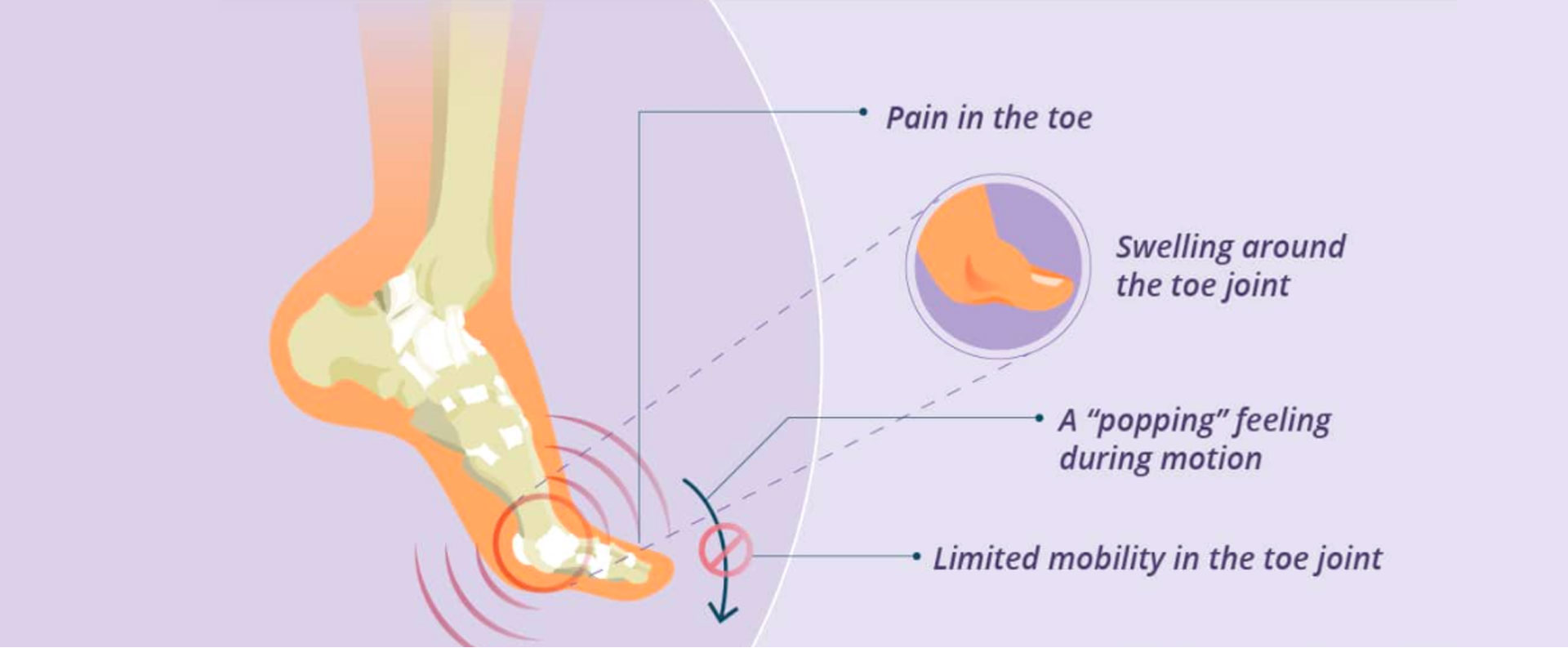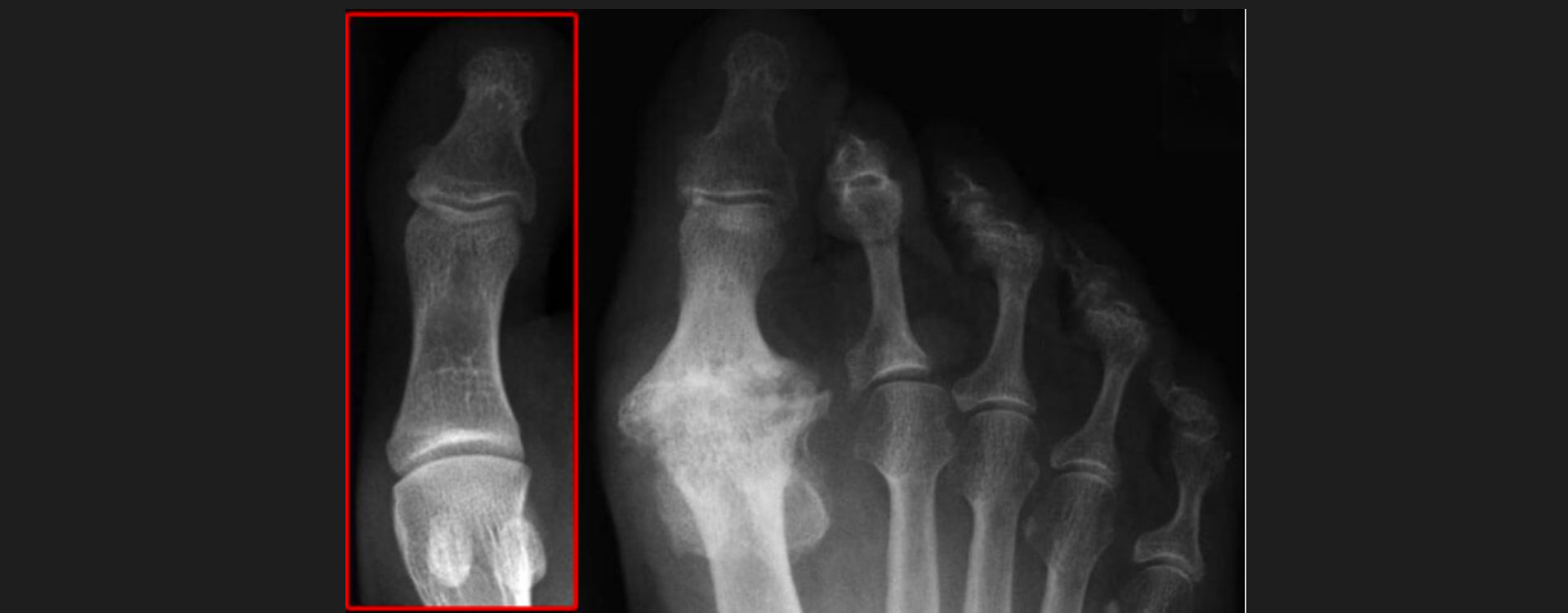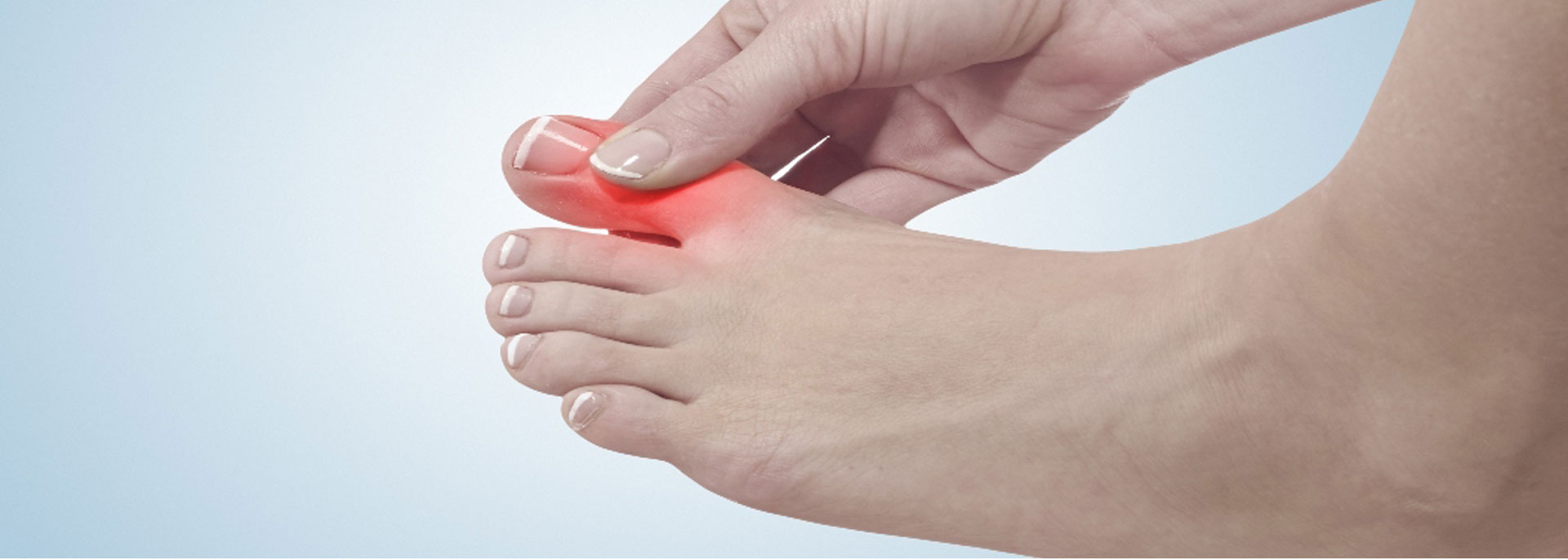TURF TOE
FOOT
1ST METATARSAL-PHALANGEAL (MTP) JOINT SPRAIN
AKA TURF TOE

Turf toe is an injury to the big toe or the surrounding ligaments that gets its name for the artificial turf used on many American football fields. Turf is cheaper to maintain, but riskier to the players because it can become so slick in rain or snow. As such, it’s common for football players to slip and hyperextend their big toe, often causing the toe to sprain as a result.
Although the injury is named after this high-risk group, turf toe, or a sprain to the big toe, is also common in other sports, like wrestling, dance, and basketball. This sprain can occur when the metatarsophalangeal joint — that is, the joint at the base of your big toe — gets overloaded in the hyper-dorsiflexion position.
For instance, in football or wrestling, the toe might bend backwards suddenly from one player landing on another’s heel. Sudden stops and pivots in a game like basketball might cause the body weight to shift while the toe is still planted, leading to strain. Turf toe can also become a chronic condition from regular running and jumping with flexible shoes.
Symptoms of turf toe often develop gradually, and can include swelling, pain, and stiffness in the area. In more severe cases, patients might have limited mobility and high instability

When we conduct an examination for turf toe at MOTUS, we’ll be looking at localized details as well as the functionality of the rest of the body. Our goal is not just to make your foot feel better and then send you home. We want to help you learn the safest, most productive movements you can have, in order to protect you from future injuries and enhance your overall performance.
Evaluation starts by looking at the sensitivity, stability, and flexibility of the metatarsophalangeal joint. There are several areas that could be affected by turf toe, including the sesamoids bones at the front of the foot, the collateral ligaments that connect to the toe bones, and the plantar plate which keeps the toe from bending too far upwards. Your physical therapist will conduct a thorough physical examination, and will also ask you about your regular physical activity.
At MOTUS, we develop a unique treatment plan for each individual based on their lifestyle and their body’s biomechanics. We can generally help patients with Grade 1 injuries with simple treatments like ice and compression and gradual strengthening exercises. Grade 2 injuries may need up to two weeks before they can return to activity. These cases could benefit from treatments like Pulsed Electromagnetic Field Therapy to help encourage healing. The most severe cases fall into Grade 3, and may need up to two months to heal.

3 Ways to Level Up Your Rehab and Injury Prevention With Us





